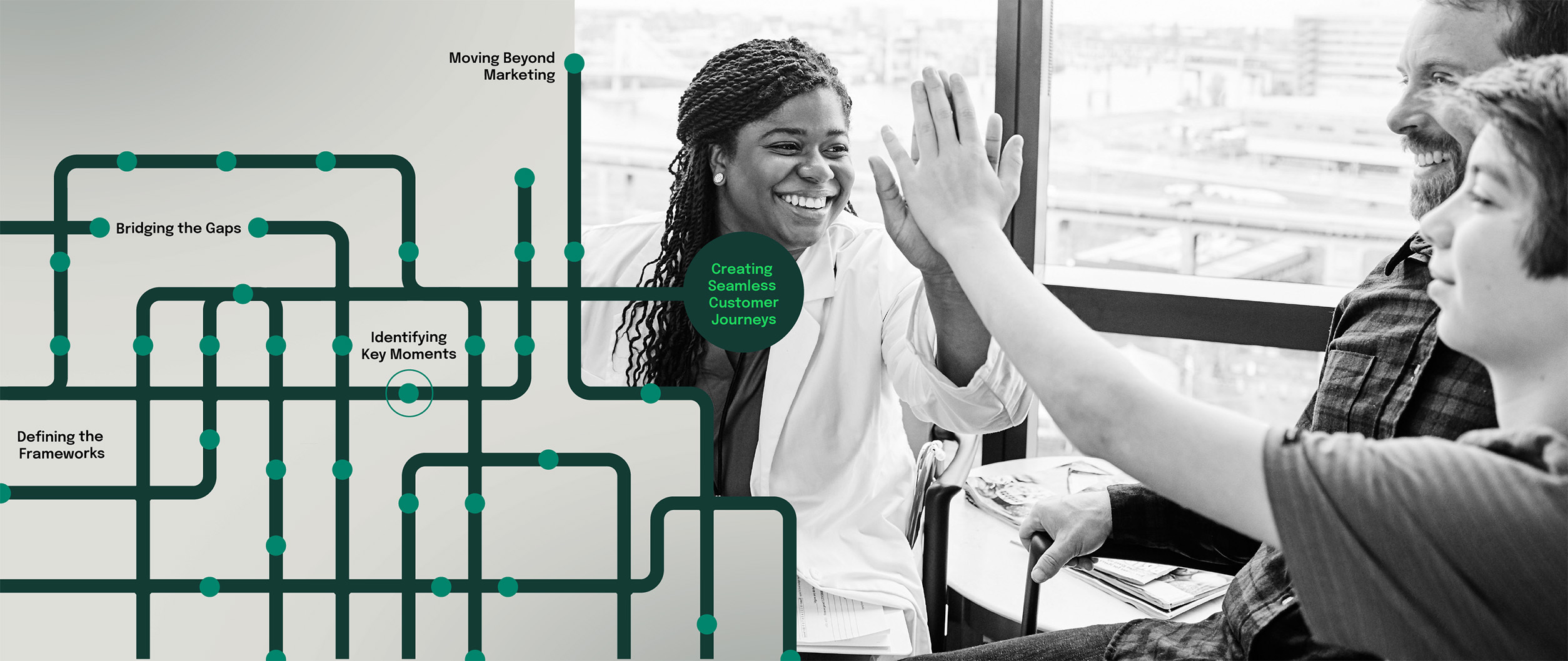Laying the Foundation for Elevated Customer Experiences
October 7, 2024
Unlock the potential of your life science organization by embracing the power of customer journey maps and service blueprints
Brandon Comstock | VP, Group Experience Leader

In life science, achieving a truly superior customer experience—whether for healthcare professionals (HCPs), patients, or other stakeholders—starts with a deep understanding of their unique and intersecting journeys. Customer journey maps and service blueprints are more than just tools; they are foundational frameworks. When applied strategically, they lay the groundwork for breaking down internal silos, enhancing operational efficiency, and transforming customer insights into meaningful competitive advantages. Without these frameworks, organizations lack the foundation necessary to deliver exceptional experiences at every touchpoint.
Defining the Frameworks
Journey maps and service blueprints should not be seen as separate or disconnected. Instead, they represent two perspectives of the same objective: the "front stage" of customer experience—emotions, perceptions, interactions—and the "backstage"—the processes, technologies, and people driving those experiences. Together, they offer a comprehensive (and actionable!) view of the customer journey.
Bridging the Gaps
Adopting a unified approach to experience strategy and design can help organizations bridge gaps across departments such as marketing, IT, product development, and beyond. Visualizing both the customer perspective and internal operations fosters collaboration, ensuring that all teams are aligned toward a singular goal—delivering exceptional customer experiences.
Moving Beyond Marketing
This holistic strategy extends far beyond traditional marketing, encouraging organizations to view every touchpoint—from a customer’s first website visit to their post-treatment care—through a broader, more comprehensive lens that considers both the customer’s experience and the operational realities behind it.
Identifying Key Moments
Qualitative research plays a critical role here, allowing organizations to identify pivotal "moments that matter"—those operational moments that enhance efficiency, set the brand apart, and increase customer satisfaction and loyalty. These insights, when integrated into journey maps and service blueprints, enable organizations to design and optimize customer experiences strategically and deploy marketing initiatives in a more targeted and intentional manner.
Similarly, envision a patient navigating a new diagnosis: The front stage might involve their initial consultation with a physician, the clarity and empathy with which their condition is explained, and the accessibility of information about potential treatment options. The backstage encompasses the seamless coordination of medical staff, the availability of accurate and up-to-date patient records, and the efficiency of insurance verification and billing processes. All of these factors contribute not only to the patient's immediate experience but also to their long-term trust in the healthcare provider and their adherence to treatment plans.
Creating Seamless Customer Journeys
By embracing this customer-centric approach, life science organizations can break down internal silos, build trust and loyalty, and ultimately deliver seamless, impactful customer experiences that lead to better health outcomes.
Looking to improve customer journeys for your life science organization? Talk to the journey mapping and service blueprint experts at MERGE!